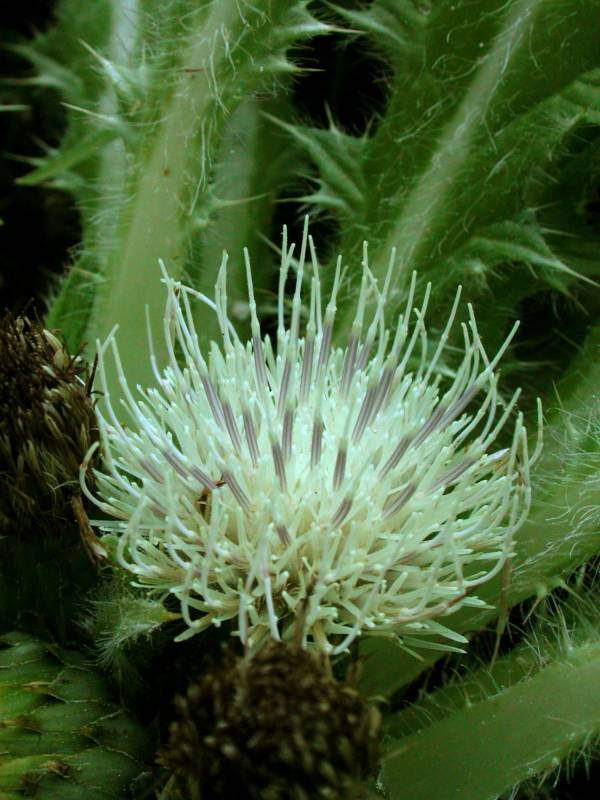Cirsium remotifolium
Cirsium scariosum
few-leaf thistle, Pacific fringed thistle, remote-leaved thistle, weak thistle
elk thistle, meadow thistle
Leaves numerous in a basal rosette in the acaulescent form, alternate in the cauline form;
leaves spider-webby on the upper surface, slightly woolly below, weakly spiny, coarsely toothed to pinnatifid, broadly linear.
Heads densely clustered at the top of the stem, over-topped by the subtending leaves;
involucre 2-3.5 cm. high, nearly glabrous, its bracts broad, well imbricate, the outer with short, erect spine tip, the inner less spiny and often with a scarious, fringed tip;
flowers all tubular and perfect, the corollas whitish to pale pink or purplish, unequally cleft, the deepest sinuses 5-8 mm. deep, the tube about twice as long as the throat.
Achene.
Cirsium remotifolium
Cirsium scariosum
- Local floras:
CA,
OR,
WA
- Local Web sites:
CalFlora,
CalPhotos,
Flora NW,
PNW Herbaria
WildflowerSearch
iNaturalist (observations)
USDA Plants Database
- LBJ Wildflower Center
- SEINet
- Plants of the World Online
- Encyclopedia of Life
- Wikipedia
- Google Image Search
- Local floras:
BC,
CA,
OR,
WA
- Local Web sites:
CalFlora,
CalPhotos,
Flora NW,
PNW Herbaria,
Turner Photog.
WildflowerSearch
iNaturalist (observations)
USDA Plants Database
- LBJ Wildflower Center
- SEINet
- Plants of the World Online
- Encyclopedia of Life
- Wikipedia
- Google Image Search



